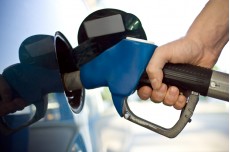You’re probably already familiar with the effect that a hybrid drivetrain has on fuel economy, but now one of the key concepts of a hybrid drivetrain -- the ability for the engine to turn off and on automatically at stoplights -- is being introduced in conventional gasoline-engined cars.
Called stop/start technology, these systems can improve your fuel efficiency as well as improve air quality and cut pollution.
But what is stop/start technology, and do you need it?
Check out the five things you need to know about about stop/start systems below to see if you need it in your next car.
Stop/start cars aren’t hybrids
Stop/start, sometimes called light hybrid by automakers, stops and starts your car automatically when it isn’t needed, but unlike the system found in a hybrid car it isn’t backed up by a large electric motor and high-voltage battery pack.
In a hybrid car, slowing down for a stoplight normally switches off the car’s gasoline engine while recapturing the car’s kinetic energy into its high-voltage traction battery pack using regenerative braking.
But in most non-hybrid stop/start systems, the car’s engine is switched off when you slow down below a certain speed -- normally a few miles per hour -- with the car’s conventional friction brakes slow you down rather than a regenerative braking system.
When it comes to starting the engine again, a hybrid car uses its built-in electric motor to get the car moving before the engine is started again.
In a non-hybrid system, the traditional alternator and starter motor combination is replaced with a heavy duty alternator capable of both charging the car’s 12-volt battery as well as starting the car.
Stop/start cuts fuel bills, saves engine, reduces emissions
Gas pump
When you sit at stoplights in a traditional car, the engine continues to run even while it is standing still, meaning the longer your car is caught in traffic the more fuel it uses.
And while your car’s alternator and on-board electrical system gets charged when the engine is running, modern battery technology and more efficient car accessories mean that even if you’re sat in traffic for a long period of time, your car’s 12-volt battery shouldn’t go flat.
By switching off the engine when the car isn’t moving, a stop/start system can drastically lower air pollution and emissions, especially in cities where there tends to be a lot of congestion.
Stop/start also reduces engine wear, lowering maintenance costs and minimizing the risk of engine overheating when waiting in traffic on a hot day.
000619_Traffic
Your air conditioning, accessories will still run
But using a stop/start system doesn’t mean you’ll be unable to stay comfortable on a hot or cold day. Thanks to modern air conditioning compressors -- which run off electricity rather than a mechanical drive from the car’s engine -- many stop/start equipped cars will continue to provide cool air for a short while even if the engine is turned off.
Once the engine has reached operating temperature, heating shouldn't be a problem either, with the residual heat in the car’s engine and cooling system enough to keep the cabin warm in all but the most extreme of cold.
In a similar vein, accessories like lights, power windows, and on-board entertainment systems will continue to function, even with the engine switched off.
Stop/start isn’t necessarily expensive
While two of the non-hybrid cars in the U.S. to offer stop/start technology -- the 2012 Porsche Cayenne and 2012 Porsche Panamera -- aren’t particularly cheap, we think stop/start technology will become common on mid-price and premium compacts and subcompacts as it already has in Europe.
A good example of an affordable, high-mileage car with stop/start is the new 2012 Kia Rio. Powered by a 1.6 liter engine offering 30 mpg city and 40 mpg highway, the optional extra of a stop/start system should add between $300 and $400 on top of its $14,350 base price, making it the cheapest car you can buy in the U.S. with stop/start included.
You can turn it off when you need to
Because of the slight delay between taking your foot off the brake and the car starting in most cars with automatic gearboxes and start/stop technology, there will be times when you won’t want the car to automatically turn off.
For example, when approaching a yield onto a highway or navigating a traffic circle, you want your car to respond quickly when you demand acceleration -- not wait while it starts the engine again.
Luckily, for those situations, you can turn stop/start systems off, turning them on again when you reach a slow-moving queue of traffic.
Quicker stop/start traffic patterns, such as you’d find on a light-controlled on-ramp in rush hour, may also prompt you to turn off stop/start, as most non-hybrid stop/start systems are not as smooth as a hybrid drivetrain’s automatic engine control.
In conclusion
If you can cope with the delayed response that accompany the system, and you want to save fuel without shelling out the extra money for a hybrid car, a car with stop/start could be for you.
And with many automakers -- including Ford, Volkswagen, Mercedes-Benz and Fiat -- offering stop/start technology on may European cars, expect stop/start to get introduced on many more U.S. cars over the next few years.
+++++++++++












